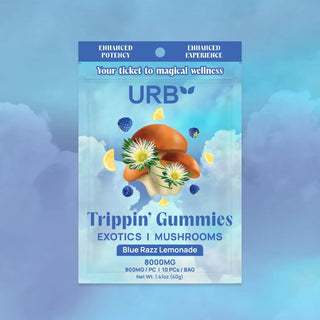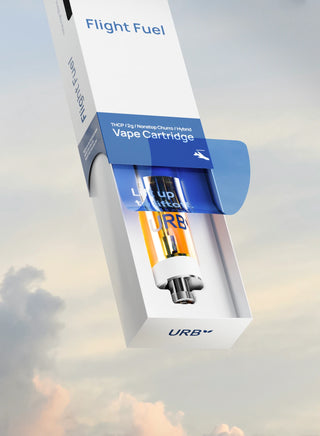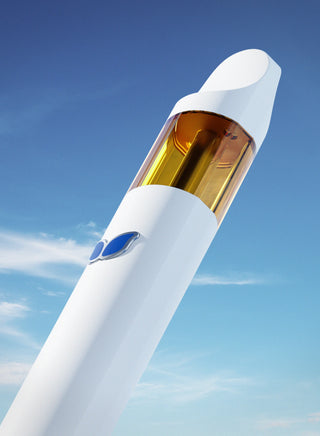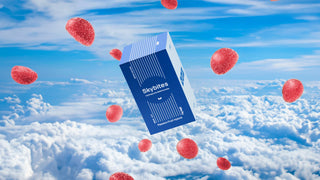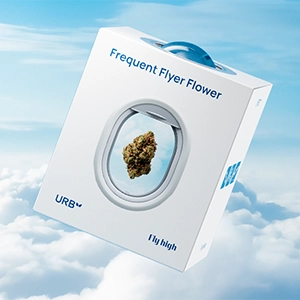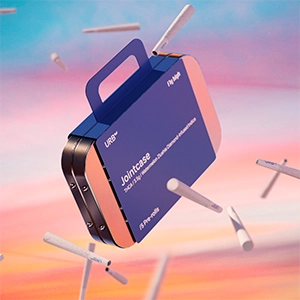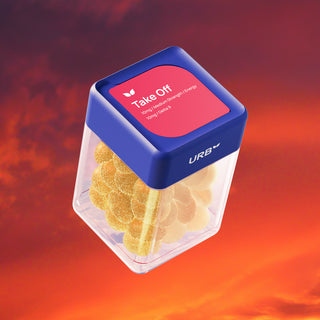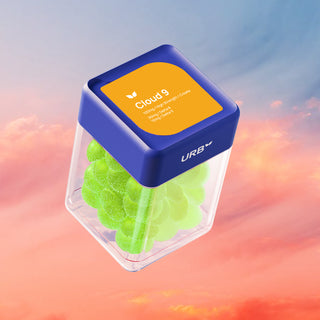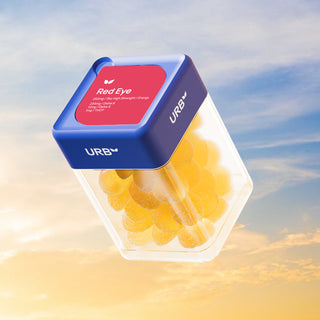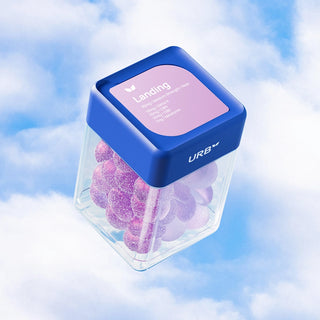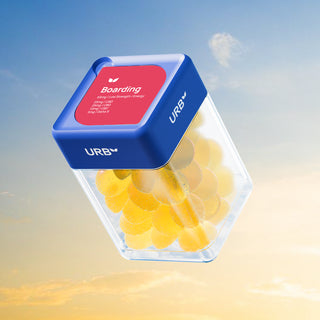Why CBG Is Worth Knowing About
If you’ve already tried THC, you know what CBD is, and you’ve been curious about HHC and other uncommon cannabinoids, then let us introduce you to CBG.
Described as a “minor cannabinoid,” due to its trace amounts in many cannabis strains, the CBG cannabinoid may be comparatively rare, but it may impart a host of useful effects. In short, CBG is the cannabinoid you didn’t know you were missing.
Now, CBG is finally stepping into the spotlight and finally getting its flowers. Follow along as we cover everything CBG, including legality, potential benefits, how it compares to other cannabinoids, and more.
What Is CBG?
CBG is short for cannabigerol. It’s a cannabinoid, like THC, CBD, THCV, and many others. However, the CBG cannabinoid serves a very unique purpose: It’s the “stem cell” or “mother cannabinoid” to all the others.
Roughly 6 weeks into the 8-week growing cycle, CBG’s chemical precursor—the cannabinoid known as cannabigerolic acid (CBGA)—breaks down under exposure to heat or UV light, forming enzymes that direct the plant to produce THC, CBD, or other cannabinoids, depending on the specific strain of the plant and other variables.

But this introduces a potential problem. Since the majority of it is converted into other cannabinoids, there’s not much CBG found in cannabis and hemp outright—and what there is tends to occur in younger plants that aren’t ready for harvest. The more CBG harvested from immature plants, the less THC, CBD, and other beneficial compounds are present.
Fortunately, there’s a solution: Some hemp and cannabis plants are specially bred to produce greater quantities of CBG. At the same time, sophisticated lab processes have opened up another source of this intriguing compound through synthesizing the cannabinoid.
Is CBG Legal?
Yes. CBG is considered non-intoxicating, and under the 2018 Farm Bill, hemp-derived CBG containing 0.3% Delta-9 THC or less by weight is legal. However, some states have moved to ban or restrict the sale of hemp-derived cannabinoids. If in doubt, check the laws and statutes where you live to be sure hemp-derived products are legal in your jurisdiction.
If you’re curious to try it, all of URB’s products—including those containing CBG—are compliant under Federal law. They’re also subject to rigorous and thorough testing to demonstrate quality and safety, with certificates of analysis for every cannabis product we offer.
Potential Benefits of CBG: Effects & Uses
When it comes to new cannabinoids and cannabis products, the first question on most people’s minds tends to be, “How will CBG make me feel?” First things first: It won’t give you the psychoactive effects you associate with THC. Instead, it’s better compared to cannabidiol, or CBD, which does not produce a typical THC effect.
Is CBG stronger than CBD? That depends on how you plan to use it. Researchers note that because CBG binds directly to CB1 and CB2 receptors, it may be considered more impactful in achieving targeted outcomes, such as increased mental focus.
Non-intoxicating and gentle, the CBG cannabinoid is often described as producing a slight activating effect that doesn’t tip over into caffeine-like jitters or the effects you might associate with a heavier sativa. Instead, many find it gently clarifying and focusing, just the thing for recentering and grounding when things feel a bit hectic.
As for potential CBG benefits, while it’s only now beginning to be studied with more rigor, early signs are promising. One study from 2024 found that CBG reduced feelings of anxiety in test subjects, while a follow-up review of the medical literature suggests CBG could have therapeutic effects on inflammation, pain response, and may even protect against neurodegeneration. Not too bad for a “minor” cannabinoid, is it?
Potential Side Effects & Safety of CBG
Research on the CBG cannabinoid is in its early stages, so there’s still a lot to be learned about its potential effects. However, many consumers report a slight possibility of CBG side effects, including:
-
Dry mouth and eyes: As with THC and CBD, CBG can decrease saliva production.
-
Drowsiness or fatigue: Some report that taking CBG makes them feel sleepy.
-
Increased appetite: It’s possible that CBG could lead to an enhanced appetite—aka “the munchies.”
-
Gastrointestinal issues: Mild digestive problems such as stomach ache, nausea, and diarrhea are possible—especially with higher doses of CBG.
-
Dizziness: Some people may experience dizziness, particularly when combining CBG with other substances.
-
Headaches: Headaches are another occasionally reported side effect.
Like all cannabinoids, obtaining CBG from trusted sources is crucial. We strongly recommend you only purchase high-quality CBG that’s been lab-tested. At URB, that’s the only kind of cannabinoid we offer. If we wouldn’t take it, we wouldn’t let you take it, either.
How Does CBG Work in the Body?
CBG interfaces with the endocannabinoid system (ECS), a network that’s increasingly understood to be one of the body’s most important regulatory systems. Working via specialized cells, including CB1 and CB2 receptors along with 5-HT1A and PPAR cells, it helps control sleep, memory, metabolism, pain, and immune responses, and other vital functions.

In other words, the ECS is a big deal, and you can think of CBG as a multitool for balance and clarity, interfacing with it in several ways:
-
CB1 and CB2 Receptors: As the principal receptor types in the ECS, these cells interface directly with CBG, allowing it to impart balance and clarity without intoxicating effects.
-
5-HT1A Receptor: Most associated with the neurotransmitter serotonin, these receptors play a significant role in regulating anxiety and mood. That’s why many consumers find that CBG has a gentle yet distinct calming effect without causing drowsiness.
-
PPAR Receptor: These cells are tied to metabolism and neuroprotective potential. While you might not feel how CBG affects them on a subjective level, researchers suggest that CBG may bind with them to impart lasting benefits, such as helping to defend against Alzheimer’s, Parkinson’s, and multiple sclerosis.
CBG and the Entourage Effect
Why do we offer so many cannabinoid blends at URB? One primary reason is the entourage effect. The theory suggests that different cannabinoids, and even some terpenes, interact to modulate or strengthen each other’s effects.
While research on CBG is still in its early stages, there are already indications that it works in concert with other cannabinoids. For instance, a 2021 study suggested that CBG and CBD interact to offer protective benefits against inflammation caused by environmental factors. The two also appear to combine their antimicrobial properties to help protect against some potentially nasty bugs.
To experience CBG yourself, you’ll find it in our Boarding Skybites, where it combines with CBD, cannabichromene (CBC), and other select cannabinoids for a distinctly grounded ride. CBG also showcases its wilder side in our Sili x Urb THCA Party Pack Joints, where liquid-diamond-infused pre-rolls offer smooth flavor and bold effects.
CBG vs CBD vs THC: What’s the Difference?
When exploring cannabis-derived experiences, it’s easy to get THC tunnel vision. But cannabinoids like CBG and CBD offer distinctly different effects—and each has its own place in your cannabis routine. Here's how these three major cannabinoids stack up when it comes to psychoactivity, effects, legality, and potential uses.
Psychoactivity and Intoxication
THC imparts the classic intoxicating effects we associate with cannabis.. CBG and CBD aren’t intoxicating; however, that doesn’t mean they’re inactive. Both aren’t considered intoxicating:
-
CBG tends to elevate mood and sharpen focus
-
CBD typically soothes the body and promotes a sense of balance
Neither will provide the same effects as THC, though both can subtly shift your state of mind.
Common Effects
While each person’s endocannabinoid system responds differently, these are the typical sensations associated with each compound:
-
THC: Euphoric, immersive, psychoactive
-
CBD: Grounded, balancing, physically calming
-
CBG: Mentally clarifying, uplifting, focus-enhancing
At URB, we tap into these unique profiles with effect-based formulations designed to match your mood or goal, from creative energy to restful recovery.
Legality and Availability
Here’s where hemp-derived cannabinoids shine. All these cannabinoids are federally legal under the 2018 Farm Bill as long as the product contains ≤0.3% Delta-9 THC by dry weight.
That means our hemp-derived THC, CBG and CBD formulations are typically more accessible for consumers in areas where cannabis remains restricted. With that said, state-level restrictions on specific cannabinoids do vary. Check out our shipping policies for more.
Potential Uses for THC, CBD & CBG
Choosing between THC, CBD, and CBG often comes down to the kind of experience you're looking for:
-
THC is typically chosen for its psychoactive effects and is often enjoyed in social settings where a more immersive experience is desired.
-
CBD is frequently used as part of a daily wellness routine, especially when seeking physical relaxation or emotional balance without intoxication.
-
CBG is often explored for its uplifting, clear-headed properties—some find it helpful for tasks that require focus or creative thinking.
Each cannabinoid offers a unique experience. Understanding how they interact with your body and mind can help you choose the right one for the moment.
How Much CBG Should You Take? First-Timer’s Guide
Interested in trying CBG but not sure where to start? Think low and slow. Our curated blends are crafted for clarity, and depending on how you’re taking your CBG, you can tailor the experience for specific outcomes. Here’s what you can expect for a smoother journey:
-
When CBG appears in vape or flower products, you’ll experience a faster lift-off, with full effects typically coming on within a few minutes at most.
-
Tinctures or drops, on the other hand, take longer to come on—about 30 minutes if taken under the tongue, up to 2 hours if combined with foods or beverages—but the effects last a good deal longer, in some cases up to 6 hours.
-
Since the CBG in edibles is processed through the digestive tract and liver, the journey will unfold slowly. Allow at least 2 hours for the full effects, but it can also last up to 8 hours, occasionally even longer.
If you’re new to cannabinoid blends, consider starting with a Delta-8 and CBG product, like our Saucy THC Diamonds Cartridge 2.2ML, offering a flavorful flight to cloud nine, no passport required.
You can also enjoy CBG pre-rolled and ready to takeoff in our Jointcase. This pack of five 0.7g perfectly pre-rolled joints is available in hybrid, indica and sativa strains with a touch of CBG, for a smooth, consistent burn and nuanced flavor.
No matter which format you choose, remember that CBG is associated with a gentle, non-intoxicating clarity and calm. Whether on its own or included in a cannabinoid blend, it’s a great way to keep your flight plan smooth and on time.
Find Your Calm & Create Your Flow with URB
If your cannabis routine could use more clarity without the crash, or more calm without full sedation, CBG might be the shift you're looking for. Known for its gentle lift and ability to support mental clarity, CBG offers a distinct experience that stands apart from both CBD and THC.
At URB, we offer CBG in multiple formats—edible, flower, and pre-rolls—so you can explore how it fits into your daytime flow or creative sessions. Whether you're easing into a workday, brainstorming your next big idea, or just looking to stay clear-headed and grounded, CBG has earned its place in the spotlight.
Curious to try it? Be sure to explore the URB Miles Program to earn rewards as you find your perfect flight path.
